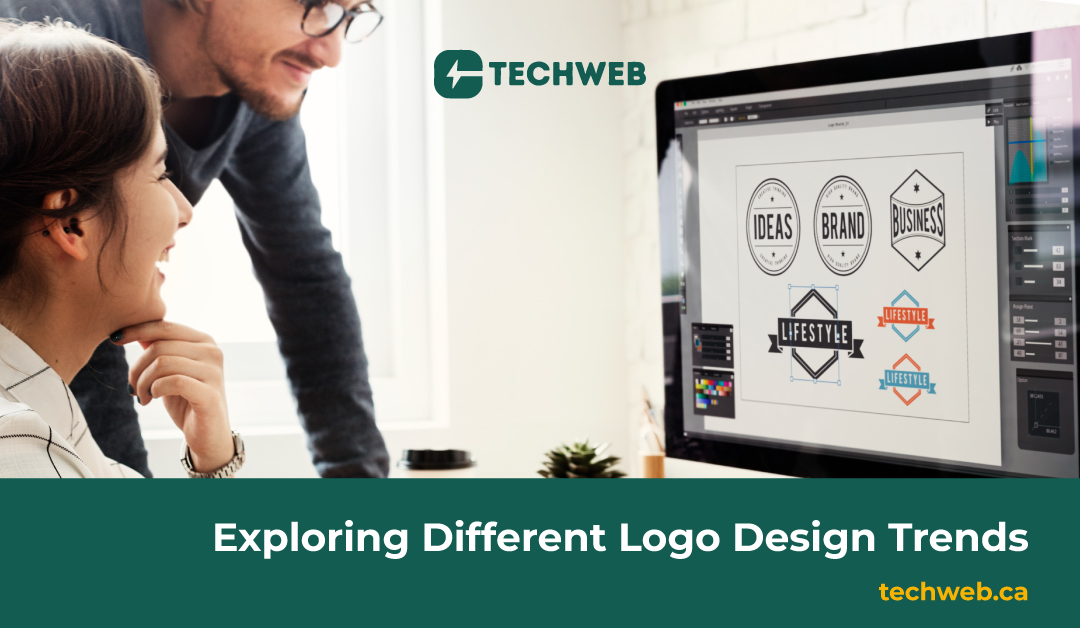Exploring Different Logo Design Trends
In the ever-evolving world of branding, a logo is more than just a visual symbol—it’s the face of a company, encapsulating its identity, values, and vision. As businesses and markets evolve, so to do the trends in logo design. Staying updated with these trends can help businesses create logos that are not only contemporary but also impactful.
Here, we explore some of the current logo design trends that are shaping the visual identities of modern brands.
1. Minimalism
Minimalism has been a dominant trend in logo design for several years, and its appeal shows no sign of fading. The essence of minimalism lies in simplicity and clarity. Minimalist logos use fewer elements, focusing on clean lines, straightforward shapes, and limited color palettes. This approach ensures that the logo remains versatile and easily recognizable, even at smaller sizes. Brands like Apple and Nike are quintessential examples of how minimalism can create a powerful visual identity.
2. Geometric Shapes
Geometric shapes are making a strong comeback in logo design. Utilizing simple, clean shapes like circles, triangles, and squares can help create a logo that is both modern and timeless. Geometric designs are often favored for their symmetry and balance, which can convey a sense of stability and reliability. Brands such as Google and Adobe effectively use geometric shapes to create memorable and distinctive logos.
3. Hand-Drawn Elements
In contrast to the sleek lines of minimalism and geometric shapes, hand-drawn elements add a personal and authentic touch to logos. This trend embraces imperfections and unique characteristics, often reflecting the brand’s artisanal or bespoke qualities. Hand-drawn logos are popular among creative industries and small businesses looking to emphasize their individuality and craftsmanship. Examples include local coffee shops or boutique brands that wish to convey a warm, inviting feel.
4. Dynamic Logos
Dynamic logos are designed to be flexible and adaptable across various platforms and contexts. These logos often involve modular elements or animations that can change according to different uses. This trend caters to the need for logos that work well in digital spaces, such as websites and apps, where interactivity and motion are increasingly prevalent. Brands like Netflix and Instagram have embraced dynamic logos to enhance their digital presence.
5. Bold Typography
Typography has become a central focus in logo design, with bold, distinctive fonts making a strong statement. Custom typefaces and unique lettering styles can set a brand apart and enhance its recognition. Bold typography is often used to convey confidence and modernity, and it can be especially effective for tech companies and startups. For example, the logos of brands like Spotify and Slack leverage bold, custom typography to create a memorable impression.
6. Gradient and Vivid Colors
Color trends in logo design are leaning towards gradients and vibrant hues. Gradients can add depth and dimension to a logo, creating a sense of movement and energy. This trend is particularly effective in digital environments, where vibrant colors can capture attention and evoke strong emotions. Brands such as Airbnb and Dropbox have successfully incorporated gradients and vivid colors to create engaging and visually striking logos.
7. Retro and Vintage Styles
Retro and vintage logo designs are making a resurgence, offering a nostalgic nod to the past. This trend often involves classic typography, retro color palettes, and aged textures. Retro logos can evoke a sense of authenticity and tradition, appealing to consumers’ sense of nostalgia. Brands in the food and beverage industry, as well as craft and lifestyle sectors, frequently utilize retro designs to connect with audiences on a sentimental level.
8. Negative Space
The use of negative space—where the background forms part of the design—adds a clever and creative touch to logos. This trend involves designing logos where the space around and between the main elements forms a secondary image or message. Negative space logos are memorable and engaging, often encouraging viewers to take a closer look. The logos of FedEx and WWF are prime examples of how negative space can be used effectively to convey hidden meanings or additional messages.
Conclusion
Logo design is a dynamic field that reflects broader design trends and cultural shifts. Whether embracing minimalism, experimenting with bold typography, or exploring the intricacies of negative space, the key is to create a logo that aligns with a brand’s identity and resonates with its audience. By staying attuned to these trends, businesses can ensure their logos are not only stylish but also enduring symbols of their brand’s essence.
As you consider these trends for your next logo design, remember that the most successful logos are those that balance creativity with clarity, making a lasting impression while staying true to the brand’s core values.

